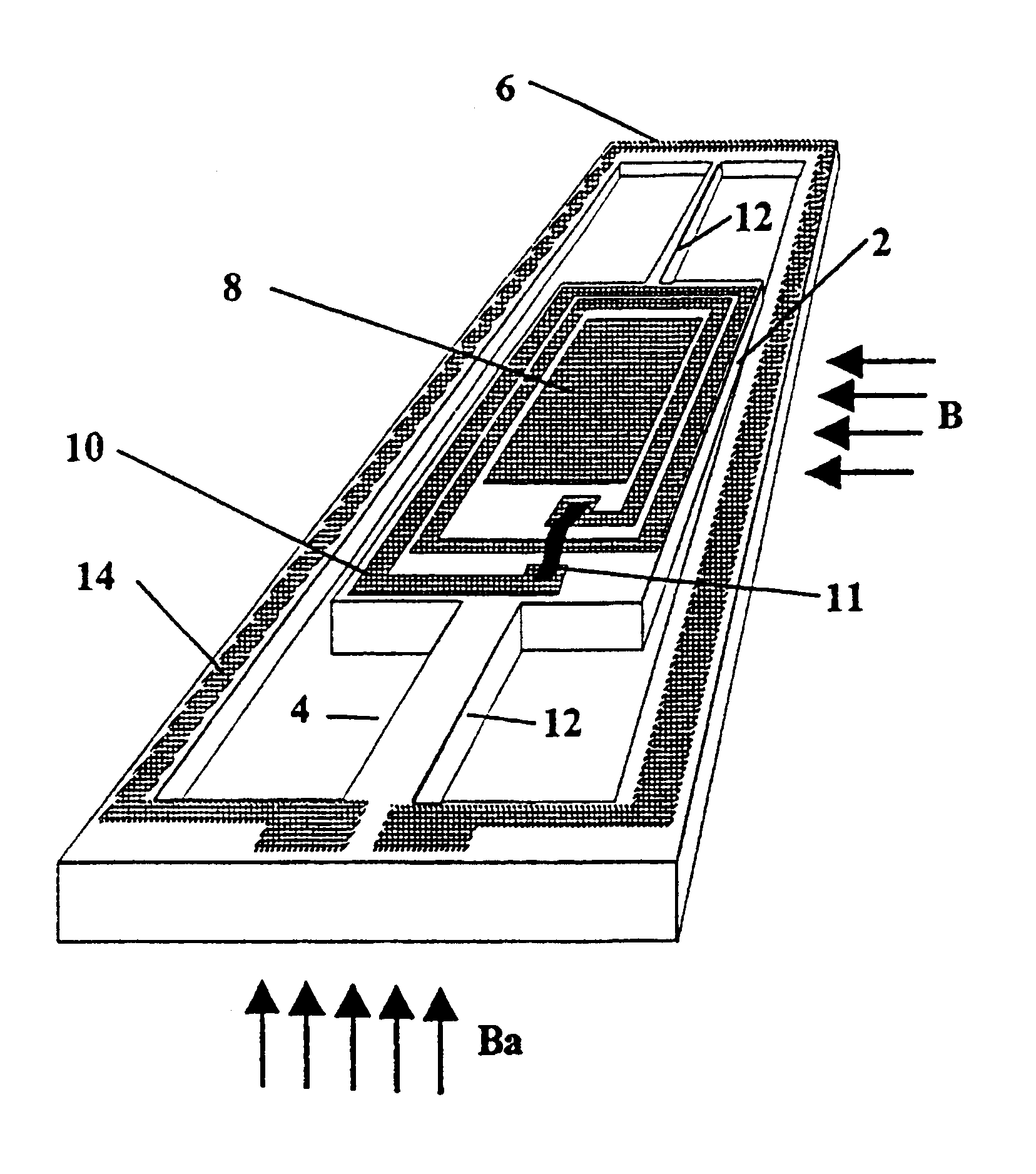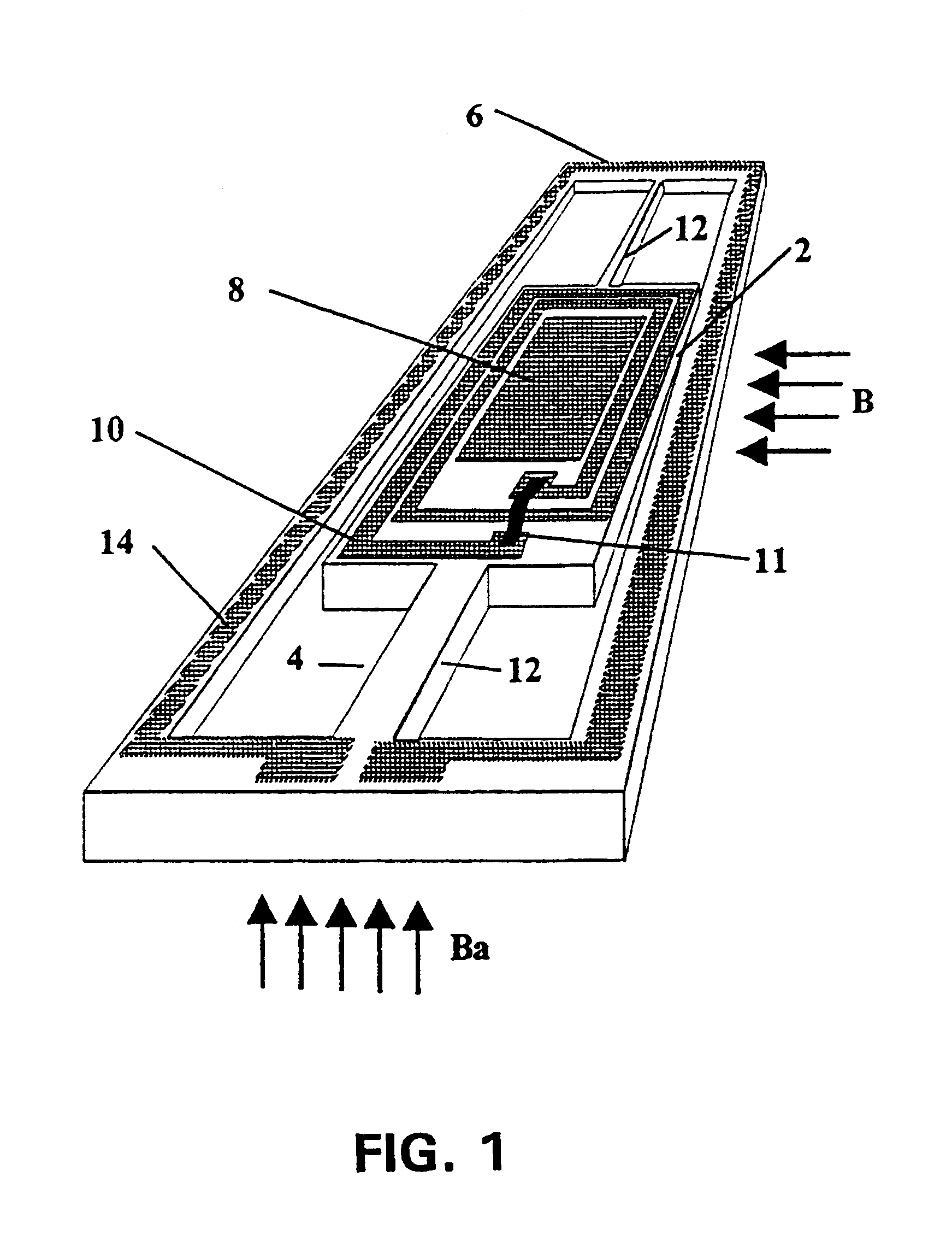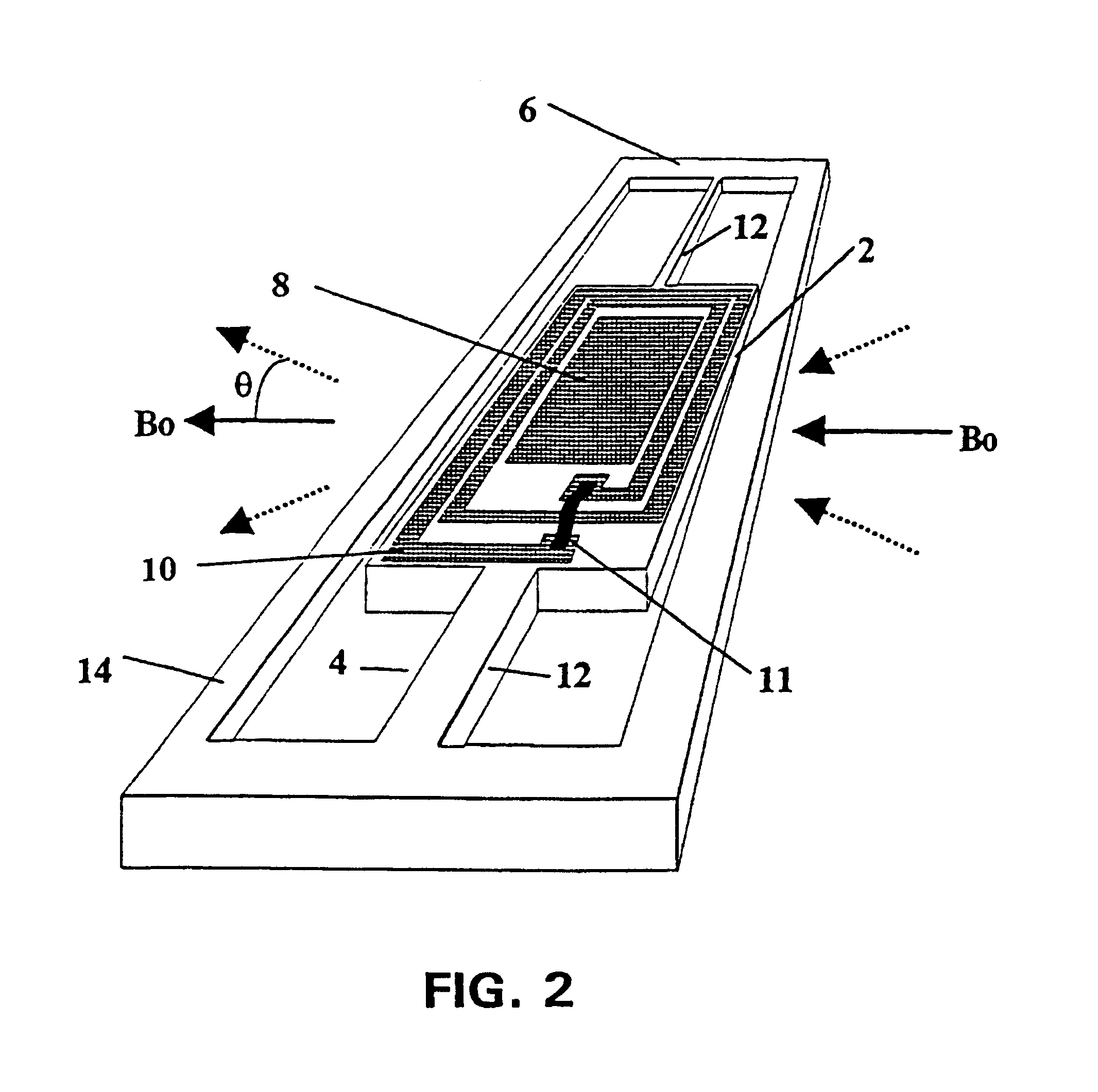Induction microscanner
- Summary
- Abstract
- Description
- Claims
- Application Information
AI Technical Summary
Benefits of technology
Problems solved by technology
Method used
Image
Examples
Embodiment Construction
As depicted in the embodiment illustrated in FIG. 1, the novel device has three main sub-systems: a rotor 2, a suspension system 4, and a stator 6. The rotor 2 includes mirror 8 and closed-loop coil 10. As illustrated in FIG. 1, closed-loop coil 10 comprises multiple turns, with the two ends of the coil connected by jumper 11. Coil 10 may also comprise but a single loop, as was done in the prototype embodiment described below. The suspension system 4 connects the rotor 2 to the stator 6. Suspension system 4, comprising torsion bars 12, has one principal degree of freedom, namely that allowing rotation or oscillation of the rotor about the axis of the torsion bars under torque. The stator 6 is a frame that supports the moving parts, the suspension system 4 and the rotor 2. Coil 14 for inductively coupling a power supply (not illustrated) to the coil 10 of the rotor (in the case of amplitude-modulation excitation) may optionally be part of the stator (as depicted in FIG. 1), or it may...
PUM
 Login to View More
Login to View More Abstract
Description
Claims
Application Information
 Login to View More
Login to View More - R&D
- Intellectual Property
- Life Sciences
- Materials
- Tech Scout
- Unparalleled Data Quality
- Higher Quality Content
- 60% Fewer Hallucinations
Browse by: Latest US Patents, China's latest patents, Technical Efficacy Thesaurus, Application Domain, Technology Topic, Popular Technical Reports.
© 2025 PatSnap. All rights reserved.Legal|Privacy policy|Modern Slavery Act Transparency Statement|Sitemap|About US| Contact US: help@patsnap.com



